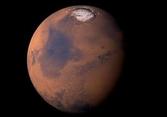Major International Media Hot Spot: New Type of Lunar Basalt Discovered by Chinese Yutu Rover
english.dzwww.com 2016-01-19 09:01:00
Written by Ling Zongcheng Translated by Pu Yang Zhao Yan
A brand-new scientific discovery based on the tour and detection of Chinese Chang’e-3 Yutu rover aroused global attention on the Moon again since the Apollo and Luna missions around 40 years ago. On December 22, 2015, researchers from Shandong University, as primary author and corresponding author, and seven other institutions at home and abroad jointly published a research paper on the top international academic journal Nature Communications.The paper announced the discovery of a new type of lunar basalt by analyzing the data returned from Yutu rover. Nature Communications made it headline news as a research highlight. The journal also praised the discovery in this way: “These are pioneering observations of a region of the lunar landscape not previously explored, and help advance knowledge of some of the youngest volcanism on the Moon.”
The news that Yutu rover has discovered a new type of lunar basalt quickly received immense attention from major global media. Newspapers including the Washington Post and the Los Angeles Times of US, the Guardian and the Mirror of UK, EI Mundo and El País of Spain, and scientific journals like New Scientist, Scientific American and Popular Mechanics, as well as new media like EurekAlert, Gizmodo, Mashable, Slashdot and Engadget all reported this scientific discovery. Tech Times, an international media on science and technology, selected the discovery as one of the international top 10 space events and one of the important discoveries of the year 2015.
“It was a beautiful landing site,” Bradley L. Jolliff, a famous lunar scientist who collaborated with Chinese scientists to analyze the rover’s data, said in the news published on EurekAlert by American Association Advancement of Science (AAAS), “and correlating chemistry with age, we can see how the Moon’s volcanism changed over time….The diversity (of titanium content) tells us that the Moon’s upper mantle is much less uniform in composition than Earth’s, possibly there were big impacts (huge collision) during the magma ocean stage that disrupted the mantle's formation.”
“These rocks in lava flood plains are particularly interesting because they offer hints into parts of the moon's past that are hidden from sight,” said Noah Petro, a lunar geologist at NASA Goddard Space Flight Centre in Maryland, in an interview by the Los Angeles Times, “because it's something on the surface today but it came up from the deep interior ... it also tells us what's going on beneath the surface.” He also added, “It's a really satisfying result because it in some ways validates our interpretation of remote-sensing data….By getting this ground truth of what the composition is at this one spot, it helps us better understand the remote data.”
Thomas Watters, a planetary scientist at Smithsonian Institution in US, noted that the research was nonetheless significant. This type of find improves the picture we can paint of the moon's evolutionary history.
According to the report by Washington Post, until now, basalts sampled from the moon all had either very low or very high titanium content. By examining young rocks uncovered by an impact crater, Yutu found basalts with intermediate levels of titanium and high iron levels. That's important, because the order and composition of minerals in basalt can reveal the source of the magma that formed it. Quartz.com commented that Yutu has struggled through mechanical troubles and extreme cold, and even been declared dead. Although the rover cannot move, it’s far from dead, continuing to collect data and finally achieving a nice victory. “The last time men walked on the moon was during the flight of Apollo 17, 43 Decembers ago. Until nowadays lunar soil and rock samples returned by the last moonwalkers are still yielding new insights into the history of moon. In the meantime, the latest explorer to go to the moon, a Chinese robotic rover named Yutu, has made some discoveries of its own. The lesson therein is that among all of the other reasons for returning to the moon, reasserting space leadership, moon mining, and supporting the Journey to Mars, science is still among the arguments as to why there is unfinished business left over from Apollo.” reported by Examiner.com.
At the same time, major Chinese media, including Xinhua News Agency, Science and Technology Daily, China Science Daily, Cankao Xiaoxi, China Daily and so on also reported the new discovery made by Yutu rover. Chinese mainstream media, such as Xinhuanet, China news, iFENG, China Science Technology Network, ScienceNet, Guangming Online, NetEase, Sina, Tencent, Sohu also republished the news.
According to incomplete figures, more than 70 Chinese-language media and 300 English-language media have covered the report of Yutu’s discovery of a new type of basalt. In addition, there are relevant reports in French, German, Italian, Spanish, Russian, Swedish and many other languages. The extensive and deep international coverage of the important scientific discovery made by Yutu rover proves that Chinese Chang’e-3 have gained worldwide recognition of its success in planetary scientific exploration.
Editor:Yu Liang






